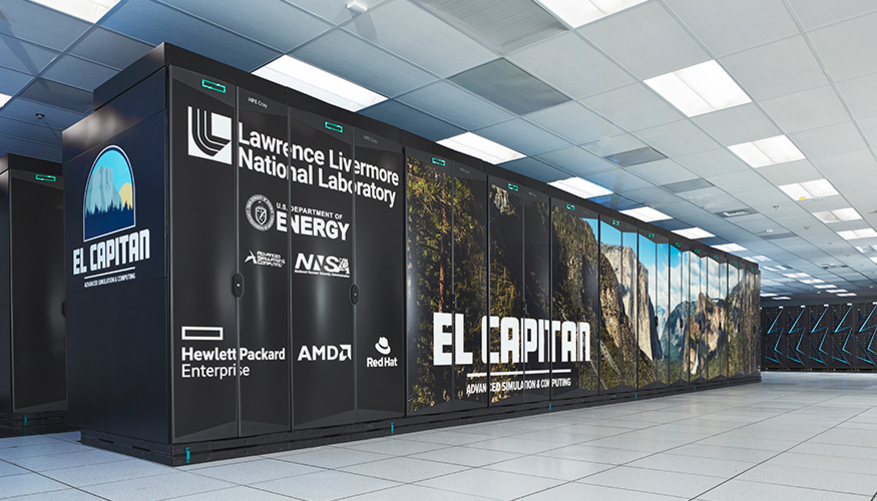The U.S. Energy Department has commissioned two new supercomputers based on Advanced Micro Devices Inc. silicon.
Reuters reported today that the project is worth $1 billion. It will be funded with a combination of public and private sector funding. The U.S. government will reportedly share the machines’ processing capacity with the private sector consortium involved in the project, which includes AMD, Hewlett Packard Enterprise Co. and Oracle Corp.
AMD and HPE previously built the Energy Department’s El Capitan system, which ranks as the fastest supercomputer in the world. According to a benchmark released earlier this year, it can provide 16.7 exaflops of performance for artificial intelligence workloads. One exaflop equals one million trillion computations per second.
The first of the two new supercomputers that AMD and HPE are building will be known as Lux. Stephen Streiffer, the director of the Energy Department’s Oak Ridge National Laboratory, told Reuters that the system will provide three times the AI performance of El Capitan. It’s set to come online within six months.
Lux will be based on AMD’s flagship MI355X data center graphics processing unit. It features 185 billion transistors made using three- and six-nanometer manufacturing processes. The circuits are based on AMD’s latest CDNA 4 GPU architecture.
AI models keep the information they process in units of data called floating point numbers. There are multiple floating point number formats that range in size from four to 32 bits. Large floating point numbers represent data with a high degree of accuracy, but take relatively long to process. Small floating points trade off some accuracy for faster processing.
Compared with its predecessor, AMD’s CDNA 4 architecture provides better support for AI workloads that use multiple floating point number formats. It’s also better at running GEMM calculations. Those are linear algebra operations that AI models use to crunch data.
In addition to the MI355X, Lux will reportedly include central processing units and networking chips from AMD. Those networking chips might be data processing units from the company’s Pensando product series. In addition to processing network traffic, AMD’s Pensando DPUs offload tasks such as data encryption from servers to leave more computing capacity for applications.
Lux is expected to run workloads related to nuclear energy, national security and medical research. In the latter field, scientists reportedly plan to explore new cancer treatment methods by simulating them “down to the molecular level.” They also intend to deploy foundation models on the system to automate manual research tasks.
Lux will be joined by a second, more capable system called Discovery in 2028. It will be based on a planned successor to the MI355X known as the MI430. The chip is expected to combine features of supercomputer processors with AI capabilities.
Both Lux and Discover will be hosted by the Oak Ridge National Laboratory. The latter system will replace the facility’s current flagship supercomputer, a machine called Frontier that is likewise powered by AMD chips. Discovery will be backwards-compatible with Frontier to make it simple for researchers to move over their workloads.
Reuters reported that officials hope to follow up the projects with “many” similar partnerships between Energy Department labs and the private sector.
Photo: Lawrence Livermore National Laboratory
Support our mission to keep content open and free by engaging with theCUBE community. Join theCUBE’s Alumni Trust Network, where technology leaders connect, share intelligence and create opportunities.
- 15M+ viewers of theCUBE videos, powering conversations across AI, cloud, cybersecurity and more
- 11.4k+ theCUBE alumni — Connect with more than 11,400 tech and business leaders shaping the future through a unique trusted-based network.
About News Media
Founded by tech visionaries John Furrier and Dave Vellante, News Media has built a dynamic ecosystem of industry-leading digital media brands that reach 15+ million elite tech professionals. Our new proprietary theCUBE AI Video Cloud is breaking ground in audience interaction, leveraging theCUBEai.com neural network to help technology companies make data-driven decisions and stay at the forefront of industry conversations.










